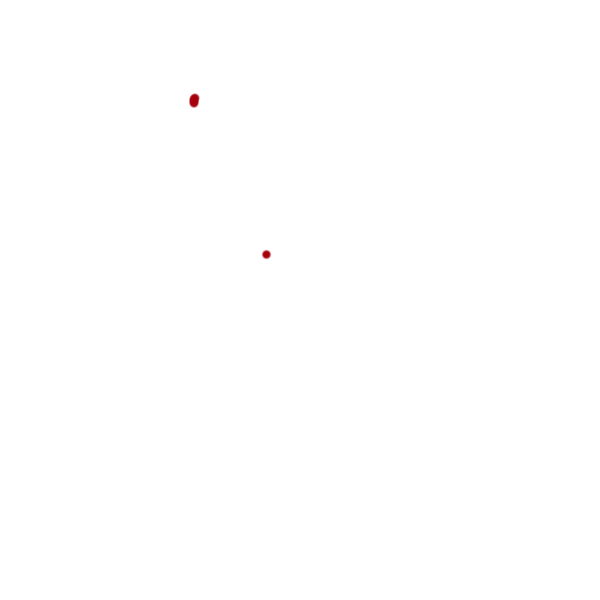数字王国协助《我的世界》打造了终极对决的名场面 / 阅读全文
2025年07月11日
Featured in Animation World Network
VFX Supervisor Piotr Karwas and Senior Animation Supervisor Liz Bernard talk the challenges of honoring the hugely popular game’s blocky aesthetic while creating the visually appealing final battle filled with 500 Piglins fighting dozens of Iron Golems, much with keyframe animation, all obeying the laws of physics.

Over a period of 25 weeks, Digital Domain crafted the climactic final battle for Warner Bros. Pictures and Legendary Pictures’ A Minecraft Movie, delivering over 10 minutes of action featuring 500 Piglins fighting dozens of Iron Golems across a 360-degree battlefield. The sequence comprised 187 shots and 11 sequences crafted to match the vision of director Jared Hess. To accomplish this, the team created custom animation rigs that honored the video game's blocky aesthetic, implemented a bespoke pipeline for the zombification transformation of the Piglins, and procedurally generated environments in Houdini.
“Minecraft is the most played video game in the world and has been for over a decade, so it’s deeply embedded in our culture,” says Piotr Karwas, VFX Supervisor at Digital Domain. “Millions of kids and adults play this game every day. While we often aim to create complexities that mimic real life, I feel there is a charm in the simplicity of the Minecraft game and its environments. That simplicity presents an aesthetic challenge, especially when real people and live-action are introduced into those kinds of environments. The clash might not work, but that was resolved before we came onboard, as this movie has been in development for 10 years.”
Throughout the film, the goal was to create something visually appealing. “You get this nice rolling reflection that comes over the flat screens of phones — something we’re used to in iPhone ads,” Karwas explains. “That reflection is completely manufactured and appears or disappears depending on the angle. Blocky surfaces have the same issue. We introduced scuff marks and imperfections, so the lighting wasn’t as perfect as it is in the game, which added more visual complexity. The goal was to create appealing images, and nobody cared where the light source came from. It’s more like an animated film approach than live-action. Although, I’ve been on live-action sets where DPs and gaffers placed lights purely to make the image appealing.”
The video game adaptation did not follow the format of other building block franchises. “Unlike the LEGO movies, not everything was made out of blocks, so we had traditional fire simulations, explosions, and small pebbles throughout the environment,” says Karwas. “Imagine climbing a ziggurat or giant steps. We also had a variety of plans that didn’t necessarily follow Minecraft’s exact look.” The hybrid approach created a coherency between the live-action cast and the animated environments. “If everything had been blocky and there was nothing realistic behind Jack Black, it would have felt artificial and awkward,” adds Liz Bernard, Senior Animation Supervisor. “Having that mix was a good thing.”
The animation process was impacted by the voxel-based character construction. “Piglins are squishy, while Iron Golems are rigid like actual metal blocks, so we had to approach them differently,” notes Bernard. “With the squishy characters, we could rig them like any normal biped. But there were limitations. Their heads are so big they can’t raise their arms all the way over their heads without their shoulders crashing into their cube heads. The Iron Golems were tougher — nothing could bend or deform. Their arms are made of two rectangles, and to bend them, you have to compromise. We had to give animators the ability to pull body parts apart as needed, so we could animate the forearm crashing into the bicep when bending the elbow. That also meant being careful about keeping characters on-model and maintaining the silhouette. It was a fun challenge.”
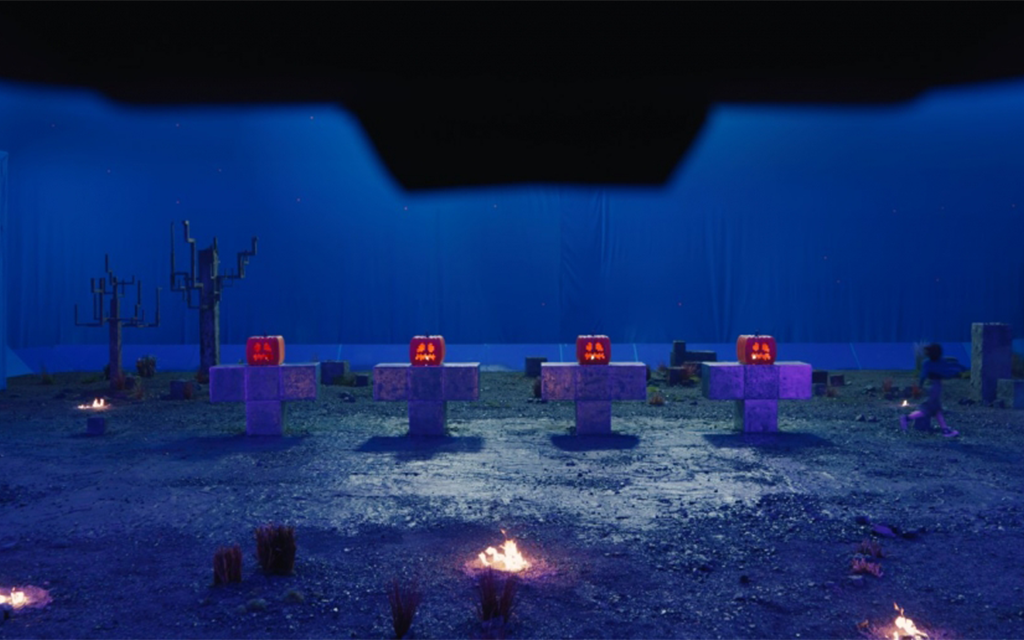
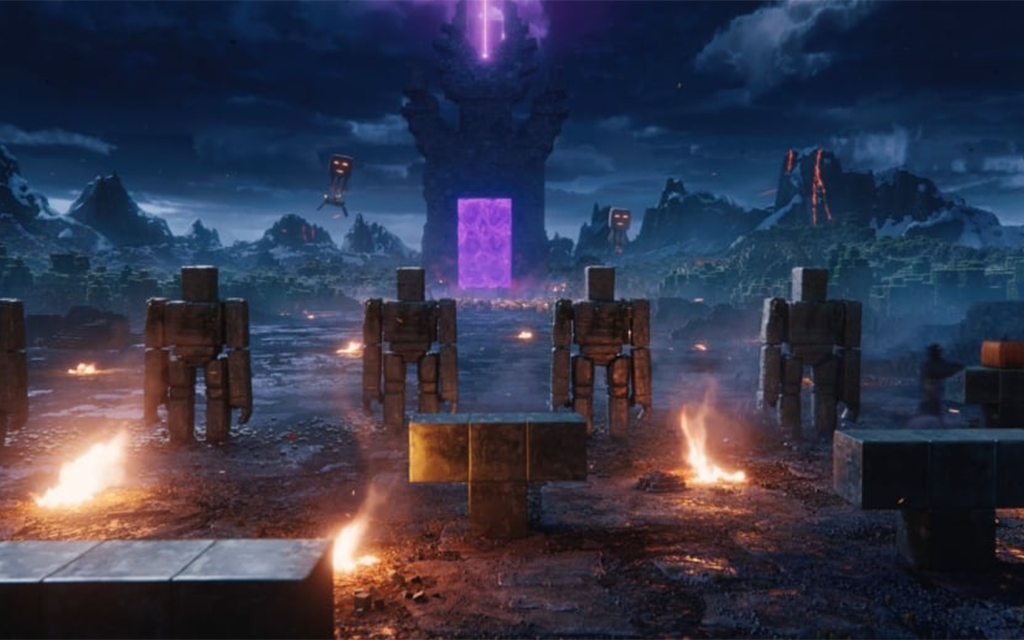
For Karwas, Houdini was the ideal tool for procedural environment generation. “We took some liberties, so blocks aren’t perfectly stacked on top of each other,” he says. “Perfect 100% mathematical uniformity in a live-action movie isn’t very interesting, so we introduced variation. With Houdini, what was also interesting was figuring out when to follow traditional physics and when to adopt a more stylized feel that mimics the game. The collapse of the portal at the end of the movie is a good example. Some parts stayed suspended when the structure exploded. That’s fascinating, because you’re not just recreating reality — it’s artistic interpretation, and you can be playful with that.”
Even with stylization, there were visual effects rules that had to be obeyed due to the inclusion of live-action actors. “Animators got to choose their cartoony muscles, and even the lighting team threw standard directions out the window and sculpted light in ways that looked beautiful even if it wasn’t consistent from shot to shot,” Bernard says. “That’s the style of the film.”
Tests were conducted to determine the right mix of realism and stylization in the destruction of the Overworld Portal. “We looked at how the remains of the structure should appear in the following shots,” explains Karwas. “We did several visual development stages and simulation tests to see what was too much, too little or looked phony or not acting according to the laws of physics.”
“The first time they blew up the portal, it would have killed all the other characters!” laughs Bernard. “We were trying to animate hero characters and crowds as the portal collapsed, and the first time effects put it together, I realized we had to move the characters way to the bottom of the screen to keep them from getting crushed by falling blocks!”
The portal explosion underwent several iterations. “We had to figure out how it should look,” Karwas says. “How much smoke and fire? How does it light the environment? Are we going to kill everybody when it falls straight forward? How do we make the debris obey the laws of physics but still be artistically orchestrated?”
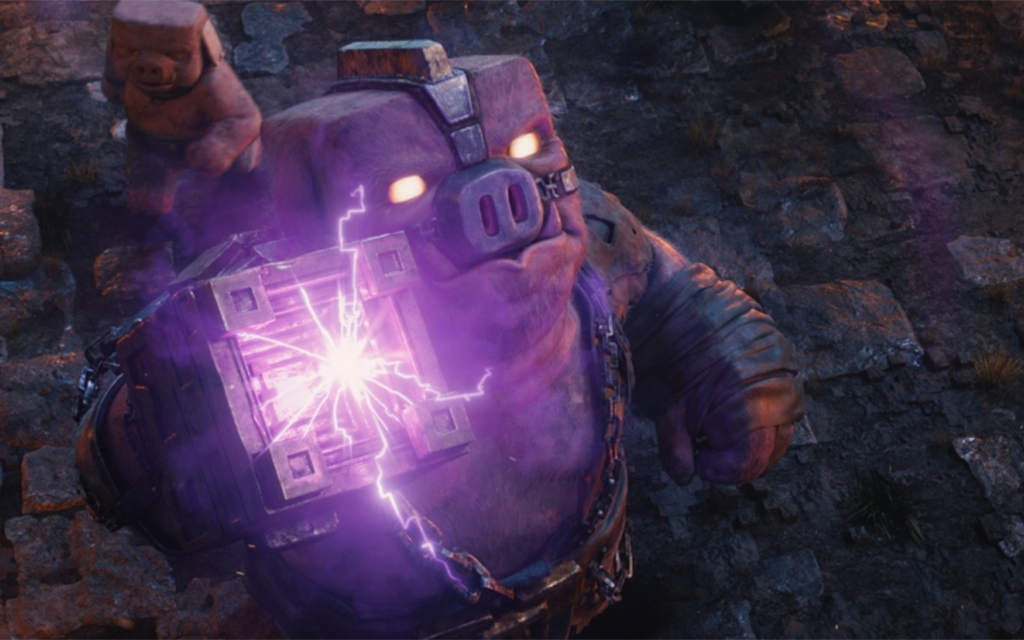
One of the most interesting developments was creating a pipeline to handle the Piglin zombification transformation. “In the game, there are three levels: the Overworld, the Nether, and the End,” Karwas explains. “Piglins live in the Nether, and when exposed to sunlight in the Overworld, they zombify and become docile. Wētā FX had already developed this effect. Our job was to match their work, then scale it up and propagate it across a much larger group of Piglins for the final battle and grand finale. It had to look interesting. We pitched ideas that went beyond the game, like exposing skeletal structures, and had to explore how gory we could get without losing the PG rating.”
The zombified Piglins weren’t typical Hollywood zombies, though a few stretched out their arms for fun. “They’re docile and move slowly, fumbling around,” Bernard says. “Some stumble, fall, roll on the ground, and writhe in pain. That’s a fun challenge when your character is made of rectangles. They don’t roll — they ka-clunk from side to side. Even though we had mocap for a lot of those actions, we had to make major modifications, especially for the ones rolling on the ground, to get that clunky, square-wheel effect.”
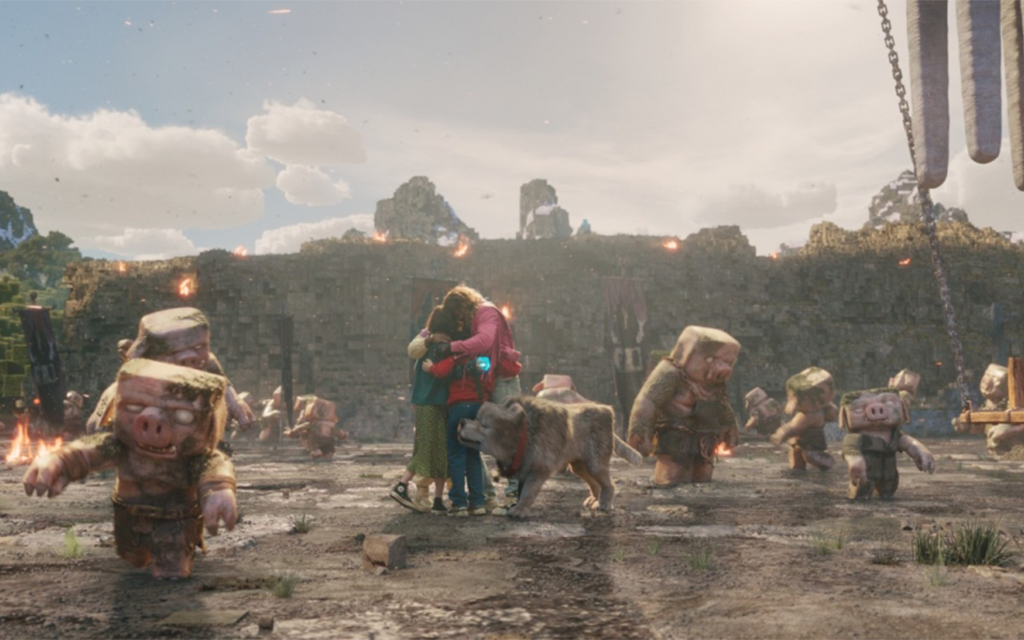
The battle also featured a showdown between the Great Hog and the Super Iron Golem. “Wētā FX had already started on the Great Hog, which we ingested in terms of the model, costume, and some animation,” says Bernard. “But we had more action with him in the end battle. We had to develop his running style and his recklessness when he went barreling through the battlefield flinging fellow Piglins. His proportions are wild — six-inch legs, elephant feet, long, chunky arms and big girth. We referenced gorillas for inspiration. Everything about his movement was dictated by his weird proportions. How do his arms and legs hit the ground with a cadence that looks out of control and clunky, but has just the right amount of scary for a kids’ movie? We started with a bit of mocap, but for the most part he was keyframed. He spent more time in the air than a gorilla would, because we needed to get him into his next pose quickly.”
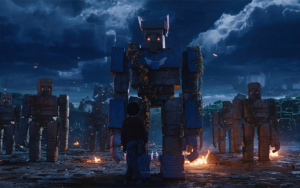
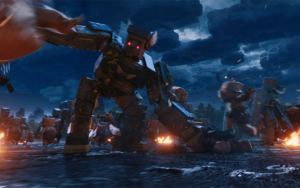
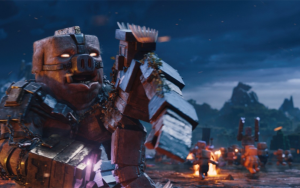
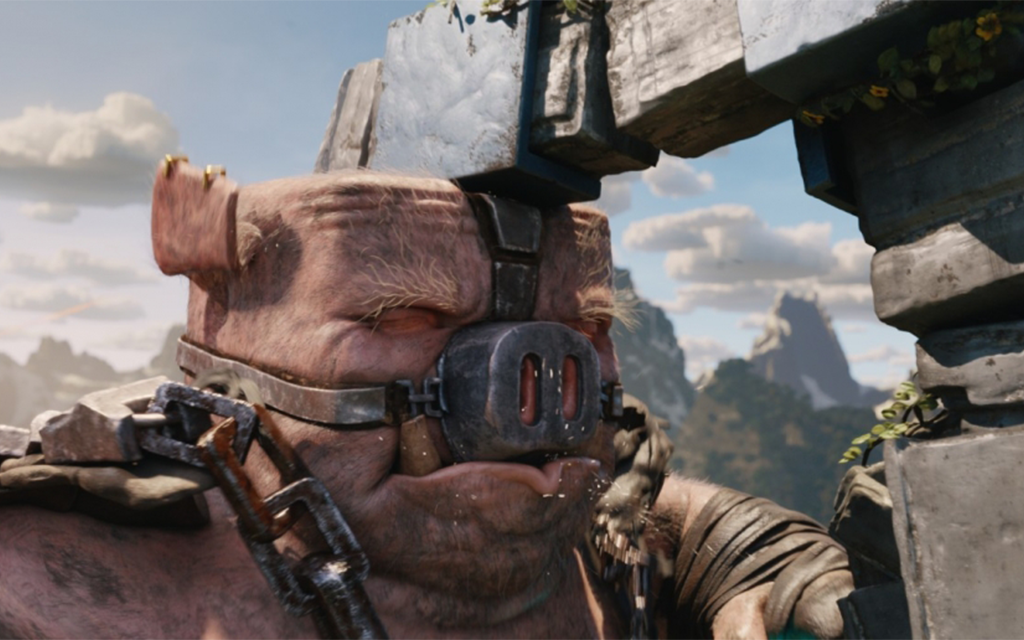
Digital Domain designed the Super Iron Golem from scratch. “He’s a larger version of a Golem with a different outfit and slightly different proportions,” Karwas says. “Both he and the Great Hog were invented for the movie. We had to learn everything about the design that had already been established and create our own interpretation. The Super Iron Golem wears the Boots of Swiftness, which are an item from the game that gave him speed and high-jumping ability. We went through multiple iterations on what those boots would look like. Liz, her team, and our rigging team had to go through a whole range of exploratory steps to come up with something that functioned like a boot.”
Regarding conducting tests to figure out how he would run without bending his arms or legs too much, Bernard adds, “Getting him to run was tricky. He’s stiff-limbed, and running requires bending joints to build power. A lot of energy came from the boots. But the boots were just two rectangular cubes — one for the foot, one for the toe. How do you bend them without making a gap or crashing them together? We developed a flap system to hide the gaps and preserve the profile of the boot.”
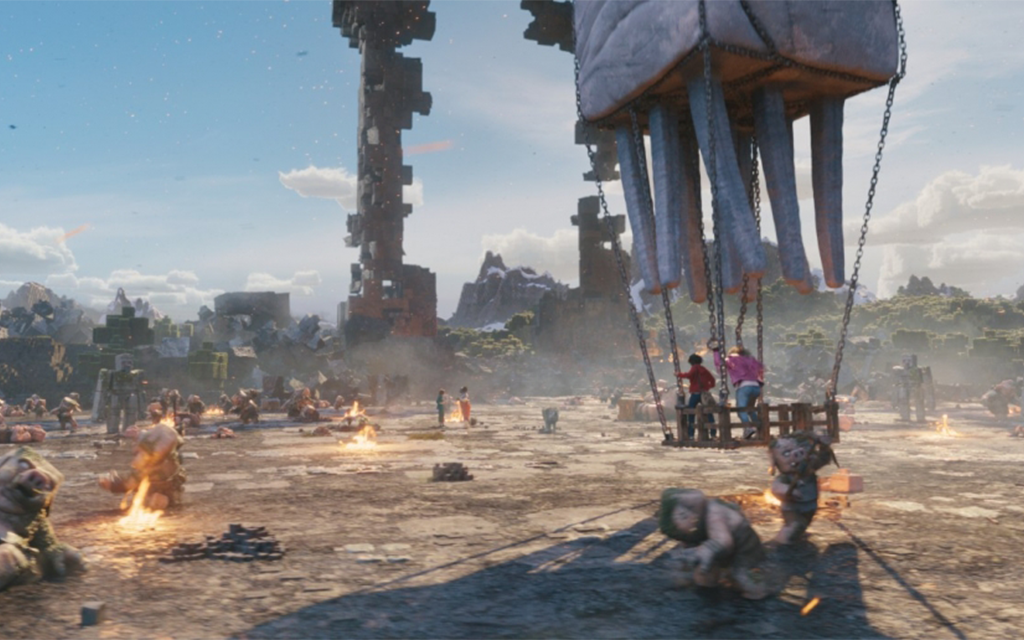
Assets and shots were shared with Wētā FX and Sony Pictures Imageworks. “It was an interesting process coming up with creative solutions to make characters from different vendors interact on screen,” says Karwas. “I’ve never done that before, and it worked out.”
Digital Domain hadn’t done many large-scale battles, so the team had to step up. “We developed the pipeline as we went,” Karwas says. “The animation team had a blast creating animation cycles with some tasty bits!”
“We made about 300 different action cycles,” Bernard says. “Everything from Piglins assembling at the other end of the battlefield, to attacking, to halfway through an attack changing their minds and running away. Piotr had a funny idea during a mocap shoot that the baby Piglins, who don’t carry weapons, should run around panicking in circles. All the mocap required extensive cleanup due to weird body proportions and elephant feet. That’s where we added a lot of personality. Wētā delivered 10 Piglins we could duplicate and scale by 30% in our crowd system. Each had two to five costumes and different actions. The variety kept it from feeling like attack of the clones.”
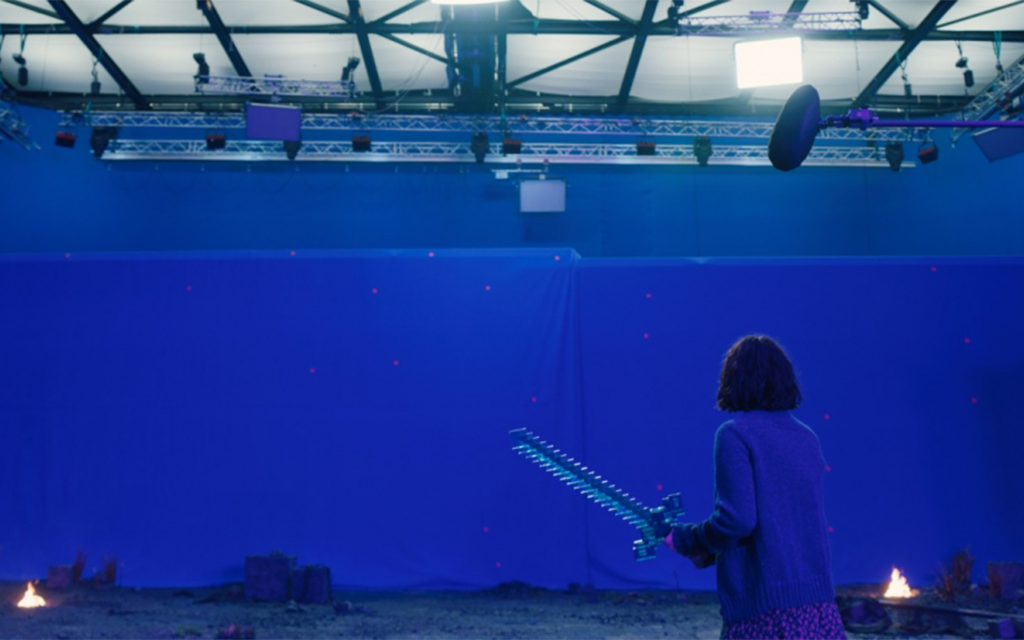
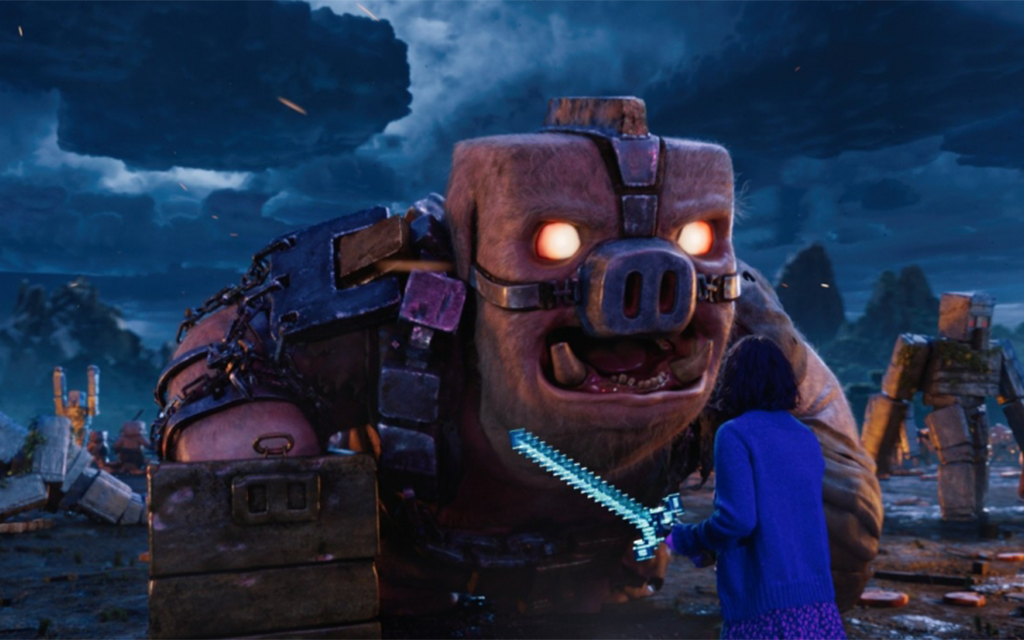
Game-inspired gags were also included. “We decided early on that any Piglin hit by a Golem during the big battle would turn into a porkchop and fly into the air,” Bernard says. “We got extra humor by placing those gags closer to the camera. Our biggest Piglin, Snowball, gets stabbed in the sternum with a diamond sword by Natalie and drops a huge porkchop in front of the camera. I love that stuff! It’s so silly. We packed as many jokes and gags into the backgrounds as possible. This movie is all about “more is more.” That’s Jared’s style and sense of humor. There were only a few times we had to pull back when a gag undercut the story, but most of it made it in. There are baby Piglins in the background picking their noses. This one rewards repeat viewings!”
